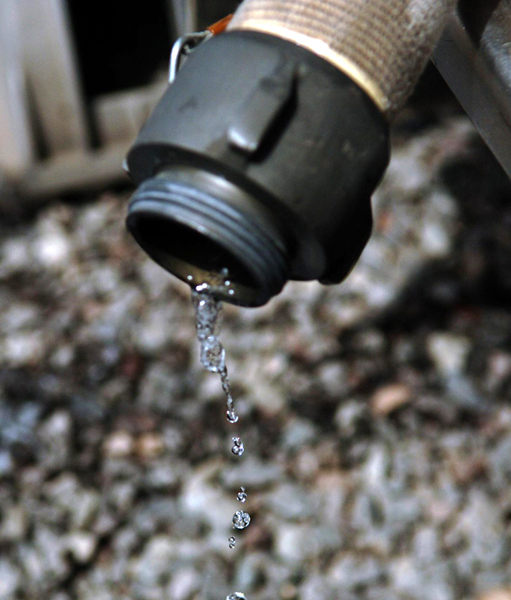
A drought in Rockland County has left the region dealing with a paradox.
Though the Hudson Valley has an abundance of water, Rockland County faces a water shortage.
The Center for Research, Regional Education and Outreach (CRREO) at SUNY New Paltz recently released its seventh discussion brief titled “Water Conservation and Long-term Water Supply Planning in the Hudson Valley: A Rockland County Case Study.”
Stuart Braman, adjunct associate research professor at Lahmont-Doherty Earth Observatory and Simon Gruber, fellow of the City University of New York’s Institute for Sustainable Cities, were interested in the issue of water conservation and decided to conduct further research.
Braman developed a Rockland County website focusing on water in 2008 and wanted to extend his research to coincide with the website. When a desalination plant was proposed by Rockland County’s private water supplier, United Water New York (UWNY), many activists believed this was not an efficient or environmentally friendly way to meet their water needs and Braman wanted to delve deeper into the issues surrounding the conflict.
“[United Water New York] proposed a desalination plant and a number of activists in the county don’t believe that’s the right way to go,” Braman said. “People wanted a more efficient water company and the water company has nothing more to gain to be more efficient. That conflict interested me and I wanted to find what was behind that conflict.”
According to the brief, Rockland County is unique in that it doesn’t rely on the New York City water system for its water supply. Only four counties were allowed access to the system and these counties include Westchester, Putnam, Ulster and Orange. Since Rockland County did not have the legal right to use this water, they hired United Water New York to take care of its water needs.
This private supplier brings benefits and problems. The brief also states that Rockland County can utilize a county wide approach, unlike its counterparts who rely on a decentralized, local government plan. But this county-wide approach makes it difficult to agree upon a plan at the state and local level. Water conservation becomes increasingly difficult when water sale and delivery are not regulated by local authorities. Since private water companies are regulated by the Public Service Commission, the county is indirectly forced to abide by their rules.
Gruber said he began thinking about water conservation a few years ago and wanted to find the answers to some critical questions.
“What’s the optimal point at which you can be water efficient but also take advantage of the water you have for economic development and everything else,” Gruber said. “It’s a balancing act.”
Director of CRREO Gerald Benjamin asked Braman and Gruber to think about the Hudson Valley when creating the brief. Benjamin said he believes it is the people’s job to come up with ways to preserve water.
“Water is the principle natural resource for the Hudson region,” Benjamin said. “We are the custodians of the city’s water and therefore should pay special attention to water as a resource.”
The brief also highlights the problem that demand is projected to exceed water supply in Rockland County, making water conservation a priority.
Braman and Gruber provide a historical context for Rockland County’s response plan for drought and water conservation and highlight the steps UWNY has taken to implement conservation including an outdoor water conservation program in 1993 to let customers know whether lawn water is required and how much.
Braman and Gruber said the brief will help raise awareness for privatizing water supply and the benefits and risks that come with that decision. Gruber said he hopes that people begin to think about the importance of water conservation after reading the brief.
“We should be doing more to plan for our water supply for the future,” Gruber said. “There is no recurrent regional playing framework that’s active for drinking water planning.”

